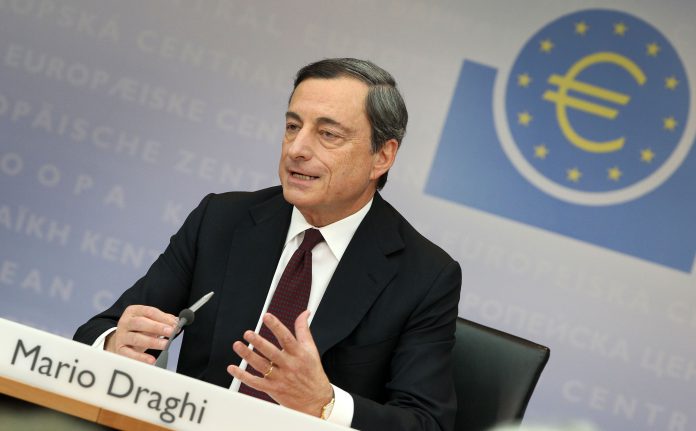European markets sunk on Thursday after ECB President Mario Draghi gave no indication of extending the central bank’s quantitive easing programme.
Markets rose this morning, before tumbling after Draghi’s press conference disappointed those looking for further stimulus measures. The ECB said it was looking at further options to continue its stimulus programme, but refused to outline any specific measures or expand its money-printing programme. He underlined his decision, saying that the current monetary policy measures were “working well”.
Draghi said: “For the time being, the changes are not substantial to warrant a decision to act. We see that our monetary policy is effective.”
The bank’s current 1.74 trillion euro asset purchase program is set to run until March 2017, and investors were hoping for evidence that Draghi would extend it. Inflation in the Eurozone still remains well below the bank’s target at 0.2 percent, with economic data from across the Eurozone continuing to disappoint.
Interest rates were left unchanged at the meeting in a move expected by most analysts, with Draghi saying that “rates have to stay low for the economic recovery to proceed, and to firm up.” The ECB also slightly upgraded its euro zone growth forecast to 1.7 percent from 1.6 percent this year, but downgraded downwards to 1.6 percent for both 2017 and 2018.
The German DAX led the sell-off this afternoon, currently down 0.91 percent at 10,654.75. Most other European markets followed suit, with the EUROSTOXX 50 down 0.6 percent 3,073.16 and the FTSE 100 dropping straight down before climbing back to 6853.82 (1541GMT).
Looking to the future, Draghi said:
“The economic recovery in the euro area is expected to be dampened by still subdued foreign demand, partly related to the uncertainties following the UK referendum outcome, the necessary balance sheet adjustments in a number of sectors and a sluggish pace of implementation of structural reforms.
“The risks to the euro area growth outlook remain tilted to the downside and relate mainly to the external environment.”

